The Science and Technology Directorate’s (S&T) Maritime Safety and Security Program develops and transitions technical capabilities that enhance U.S. maritime border security by safeguarding lawful trade and travel, and helps to prevent illegal use of the maritime environment to transport illicit goods or people.
Projects and Activities
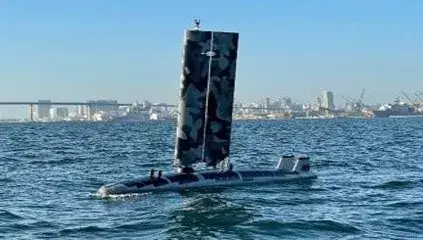
Port & Coastal Surveillance
- Dark Vessel Detection
- Maritime Domain Awareness Sensors
- Maritime Unmanned Systems Technology
- Maritime Objects and Analytics

Remote Maritime Technologies
- Underway Cutter Connectivity
- Distress Alerting in Remote Maritime Environments (Rescue 21 Augmentation from Space)
- Next Generation Maritime Public Communications
- Search and Rescue Devices
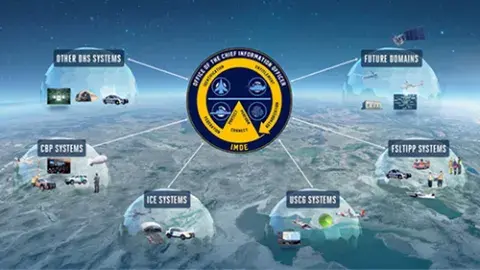
Integrated Multi-Domain Enterprise
- Integrated Multi-Domain Enterprise
- Border and Coastal Information Services
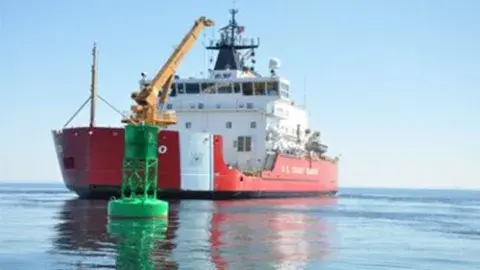
Port & Waterway Resiliency
- Waterways Analysis and Management Systems
- River Information Systems
- Maritime and Port Resiliency and Security
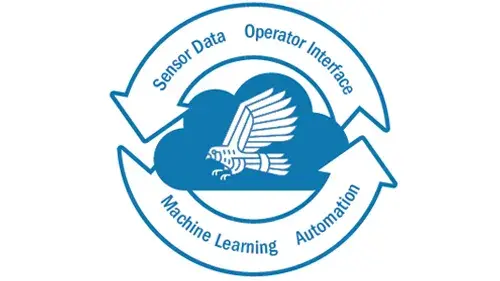
Datahub Analytics
- Data Science Applications and AI/ML Analytics
From May 2022 to July 2023, the Maritime Safety and Security (MSS) Program sought to develop a 10-year capability roadmap to address current and future demands across DHS and to inform future initiatives and budget requests. The MSS Roadmap Brochure was developed for the public to see the future of the MSS Program.
MSS Roadmap Video
The following video was created to show the key topics that generated insights into factors that will shape the maritime environment and what the Maritime Safety and Security (MSS) program would do to meet DHS components' needs. This data was incorporated into the MSS Roadmap in development of new projects and activities to ensure MSS program met DHS components' current and emerging capability needs.

Maritime Unmanned Systems Technology
DHS completed testing on unmanned vessels to inform U.S. Coast Guard strategy on unmanned systems and transitioned the vessels to other DHS interagency partners for research purposes.

TITANIC
Operation and sustainment of TITANIC architecture transitioned to International Ice Patrol (IIP), enabling integration of satellite-based iceberg reconnaissance into the IIP workflow. TITANIC combines the significant geographic coverage from space-based Synthetic Aperture Radar (SAR) imagery with the efficiency of computers to provide the first automated capability to detect and report iceberg locations using satellite imagery.

Integrated Multi-Domain Enterprise
Integrated Multi-Domain Enterprise (IMDE) transitioned to the DHS Office of the Chief Information Officer (OCIO) as sponsor. IMDE establishes a core information sharing architecture to enable DHS to meet mission-critical information sharing, domain awareness, and multi-agency operational coordination needs.
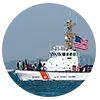
Waterway Analysis and Management Systems
The Waterway Analysis and Management System (WAMS) transitioned the first two modules of this new data visualization tool to the USCG, which is in the process of integrating them into their system of record. Modules one and two, Waterway Health and Waterway Performance, will improve the USCG’s ability to manage data tracking aids to navigation and traffic along U.S. waterways. WAMS will modernize and enhance the USCG's existing waterway management system so that it may better monitor, update, visualize and analyze Aids to Navigation (ATON).
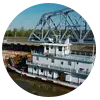
River Information System Enterprise
The River Information System Enterprise (RISE), transitioned the Lock Status Analysis Tool (LSAT) to the U.S. Army Corps of Engineers (USACE), to better manage the maintenance of locks and dams it oversees and efficiently move people and material to regions where they can provide the greatest impact. This effort will provide waterway managers with more effective and user-friendly capabilities to prepare for, mitigate, respond to, and recover from incidents or disasters affecting the Maritime Transportation System.

Datahub (Kestrel)
Completed development and delivery of 25 unique air, maritime, counter Unmanned Aerial Systems (cUAS) and Intelligence analytics. These analytics were credited with the initial identification of more than 100 suspect air and maritime activities, to include the identification of a High-Altitude Object (HAO) in U.S. airspace.
- Feature Article: New Geo-Tracking Buoys Make a Splash During Live Test Events
- Feature Article: Using a ‘Roadmap’ to Chart the Future of Maritime Security
- News Release: From Physical Maps to Online Lookups - DHS S&T and NOAA Transition Harmonized Waterway Database to Coast Guard
- Blog: Helping Coast Guard Warn Ships of Icebergs in the North Atlantic
- News Release: New Satellite-based Imagery Technology to Help Coast Guard Warn Ships of Icebergs in the North Atlantic
- Feature Article: Ensuring Coast Guard Can ‘Strike’ Fast During HAZMAT Incidents
- Feature Article: How Autonomous Vessels Can Help the Coast Guard Safeguard Our Waters
- News Release: S&T Funds San Jose Startup Customize Language Translator USCG
- Snapshot: Overcoming the Tyranny of Distance in the Arctic
- Amphibious eXtreme Terrain Vehicle for Ice Rescue Fact Sheet
- Maritime Domain Awareness Sensors Fact Sheet
- Maritime Port Resiliency and Security Research Testbed Fact Sheet
- Maritime Safety and Security Program Fact Sheet
- Maritime Unmanned Systems Technology Fact Sheet
- Mass Rescue Operations Fact Sheet
- Port & Coastal Surveillance Project Fact Sheet
- Port and Waterway Resiliency Fact Sheet
- Rescue 21 Augmentation from Space Fact Sheet
- River Information Systems Fact Sheet
- Waterways Analysis and Management Systems Fact Sheet
Learn more about us and discover how your organization can partner with S&T to make the homeland more secure.
